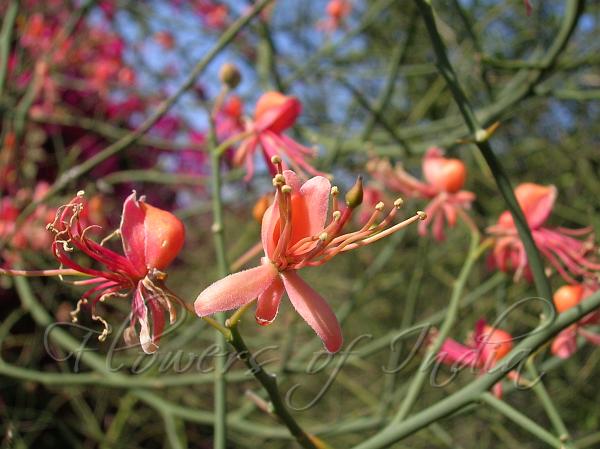|
| Bare Caper |
|

|

| File size | 655669 |
| Original date | 3/19/06 3:31 PM |
| Resolution | 2048 x 1536 |
| Flash | Flash did not fire, auto |
| Focal length | 8.0mm |
| Exposure time | 1/313s |
| Aperture | 5.5 |
| Focus Distance | |
| Metering Mode | Partial |
| Camera make | NIKON |
| Camera model | E3700 |
| Sensor type |
|
|
|
| Photo: |
Botanical name: Capparis decidua Family: Capparaceae (Caper family)
Bare Caper is a climbing shrub with vine-like branches hanging in bundles. The bark is
greeish-yellow and smooth. The thorns are paired, pale brown, straight or
hooked and to 0.5cm. There are only leaves on young shoots that are small
and narrow and soon fall off. Leaves only appear during short rains.
Flowers are pink-red, single or in threes beside leaves and about 1cm
across. Flowers appear at the beginning of the dry season. Fruits are red
and rounded, about 1cm across, black when ripe and dry. Fruits are edible.
The skin of the fruit has to be removed and the flesh can be eaten.
Everybody collects and eats the fruits.
| Identification credit: Tabish | Photographed in JNU & Garden of Five Senses, Delhi & Maharashtra. |
• Is this flower misidentified? If yes,